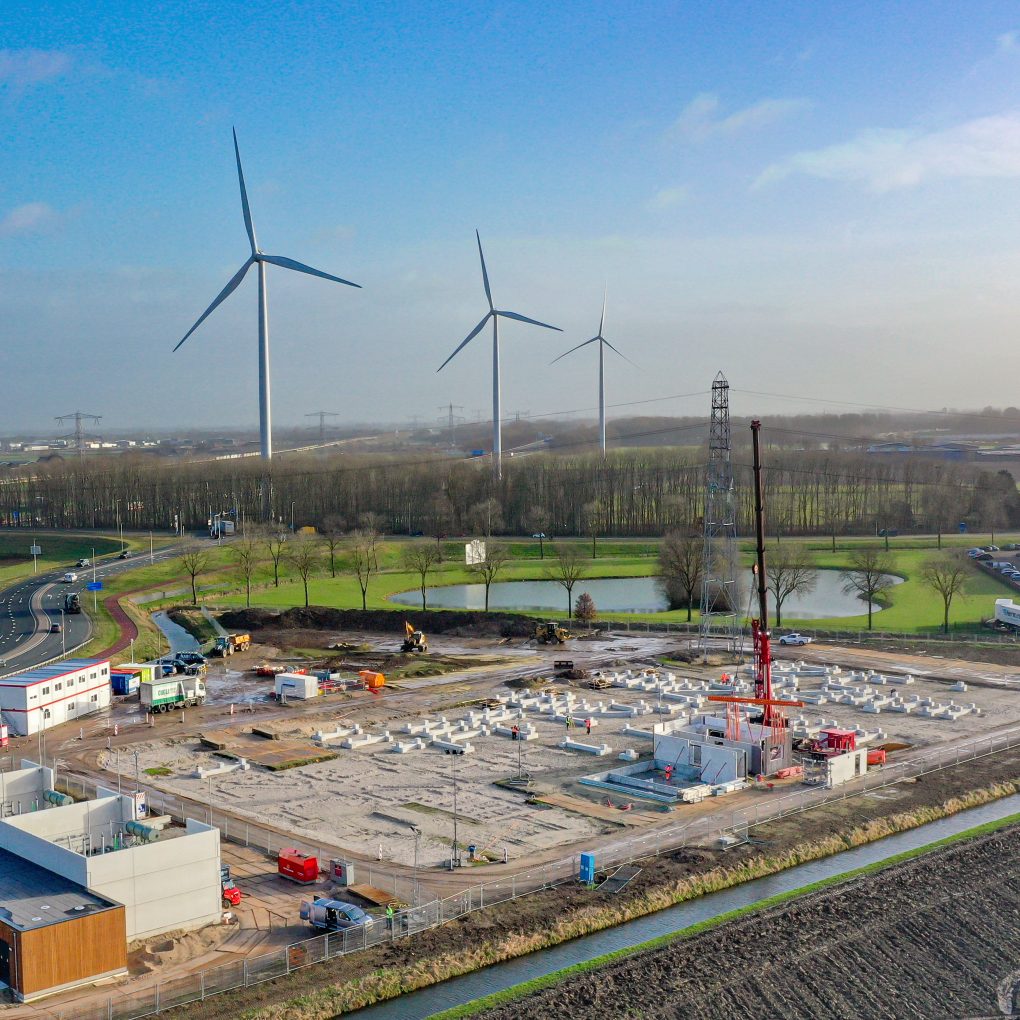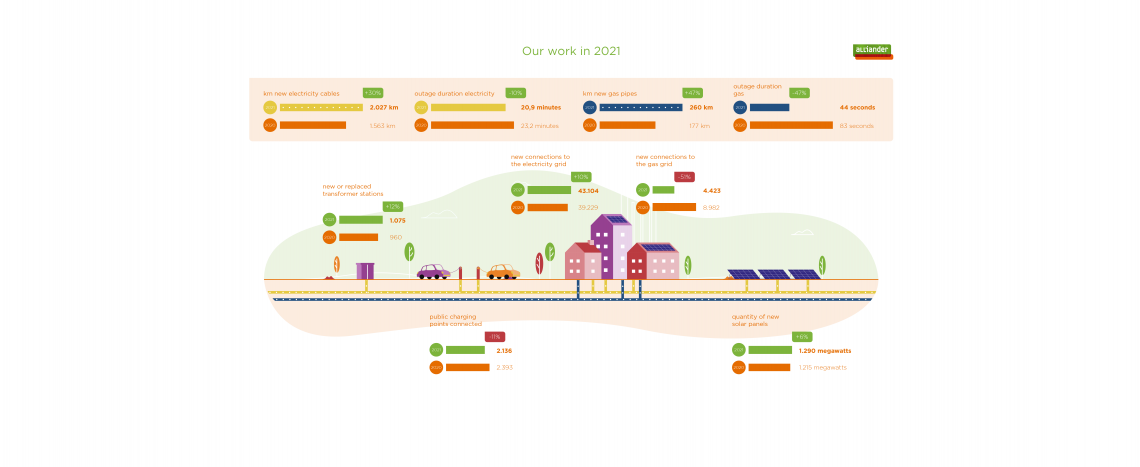
Alliander lays record length of cables and pipes and sees more rapid growth in expected demand for electricity
The Netherlands’ decision to step up sustainability efforts, a growing economy, digitalisation and extensive residential construction have led to an explosive growth in the demand for electricity. Alliander’s most recent estimates reveal that specifically housing construction, industry and data centres will, in the short term, already place greater demands on the electricity grid than originally predicted for 2030. Ambitions for the increasing challenge posed by residential housing are becoming ever more concrete. In the meantime, local authorities are ramping up residential construction. As newly constructed homes are mainly being produced without gas and are equipped with all-electric heat pumps, they are consuming on average four times more electricity than properties heated by gas. As a result, the expected level of electricity demand created by heat pumps in (newly built) houses will be reached eight years earlier than anticipated. It is becoming increasingly apparent to the industrial sector that they need to fully commit to both electrification and the use of green gases. The current gas price and the rising carbon prices are further boosting electrification with e-boilers, for example. Last but not least, data centres are becoming ever larger and their locations are spread more widely over the country when compared with earlier estimates. The energy needs of all these data centres combined are expected to reach levels predicted for 2030 six years earlier.
Maarten Otto, Alliander’s CEO: “Each day, we are working extremely hard on our electricity and gas grids. Last year, we carried out more work than ever before. At the same time, we are observing that the demand for energy is rising each year at a much faster rate than was previously foreseen in the run-up to 2030. The constantly increasing demand for energy caused by, among other things, the more stringent climate goals and tougher housing challenges, creates the dynamics with which we are continually confronted. Our social responsibility is clear: due to an acceleration in the energy transition, our production needs to increase even further in the years to come. In order to further accelerate our production, we are adapting our organisation and are managing our work in different ways. As a result, we are now drawing more frequently on the capacity of our contractors by outsourcing more work. The use of modular building can also enable us to get more work done. In this way, we can expand the electricity grid more quickly. In addition, we are also working on the digitalisation of our current grid to ensure that we can use it more efficiently. We cannot, however, meet this challenge on our own. To create the energy grid of the future, cooperation between all stakeholders is required, the government ought to provide greater direction, and we quickly need new regulations to reduce turnaround times.”
More work completed
In 2021, Alliander completed a record number of new connections to the electricity grid, as well as laying a record length of cables and pipes. The figure below shows the key figures on work completed in 2021.

Investments of approximately 1 billion euros
The amount invested in 2021 also indicates that Alliander has carried out more work. Walter Bien, Alliander’s CFO: “The large amount of work carried out is evident from our investments, which reached a record high of approximately €1 billion over the past year. In the coming years, our investments will continue to increase considerably. In 2022, we expect to invest €1.2 billion. In order to facilitate growth, Alliander continues to work on creating an agile, effective and cost-efficient organisation. In 2018, we started to make structural cost savings. By 2021, these savings had already reached €160 million on an annual basis. We are also conducting constructive discussions with the government to see whether they can contribute to the financing of network operators. Over the past year, our shareholders have also strengthened Alliander’s capital position by an additional €600 million. In this way, we can continue to invest in an energy grid that is reliable, affordable and accessible for everyone.”
Alliander’s net result came to €242 million in 2021 (2020: €224 million). Investments increased by 14% to €1,014 million (2020: €890 million). Operating income increased by 6% to €2,181 million (2020: €2,055 million).
Further acceleration needed
To be able to fulfil the increasing and accelerated demand for electricity, the electricity grid needs to be further expanded. According to current estimates, Alliander’s assumption is that almost thirty new electrical substations need to be built and approximately sixty existing stations needed to be reinforced by 2030. The number of transformer stations needs to increase by 23,000 by the same date. This means that the number of stations will double compared to the current amount. In addition, 43,000 kilometres of new electricity cables are required over the coming nine years. This length is roughly the same as the earth’s circumference. But our work does not only involve an expansion of the electricity grid. Over the next ten years, approximately 1,200 kilometres of the gas network need to be replaced. The greater stringency of the new cabinet’s climate goals has not been accounted for in the existing work plan, as their impact remains unclear.
A challenge for all stakeholders
To increase productivity, Alliander is simplifying, optimising and digitalising its work processes. By adapting the organisation, planning further ahead with municipalities and outsourcing more operational tasks to subcontractors, we have taken steps to expand energy grids more rapidly. But more is required to make progress faster. Alliander regards a further acceleration as a challenge for all stakeholders involved in the energy transition.
To accelerate further, it is essential to reduce turnaround times on finding space and completing permit procedures to a maximum of two years. To achieve this, greater direction is required from the government when it comes to spatial planning – for example, by taking account of the physical space required to provide houses with energy, when developing new residential districts. In addition, we also need more technical personnel in order to accelerate the expansion of the grid. Technical training courses must be made more attractive. More infrastructure is, however, not the only solution. The existing electricity grid needs to be used more smartly and efficiently so that less expansion is required. To achieve this, there is still a shortage of appropriate incentives such as battery subsidies, the phased reduction in the statutory feed-in rate and convincing producers to contribute to the payment of grid costs.
Finally, Alliander believes that not all the work can be carried out at the same time. Some unavoidable choices also need to be made as to who should be connected to the grid first. Alliander considers that it is the government’s task to make these choices and to prioritise clearly the areas that network operators should focus on first.
